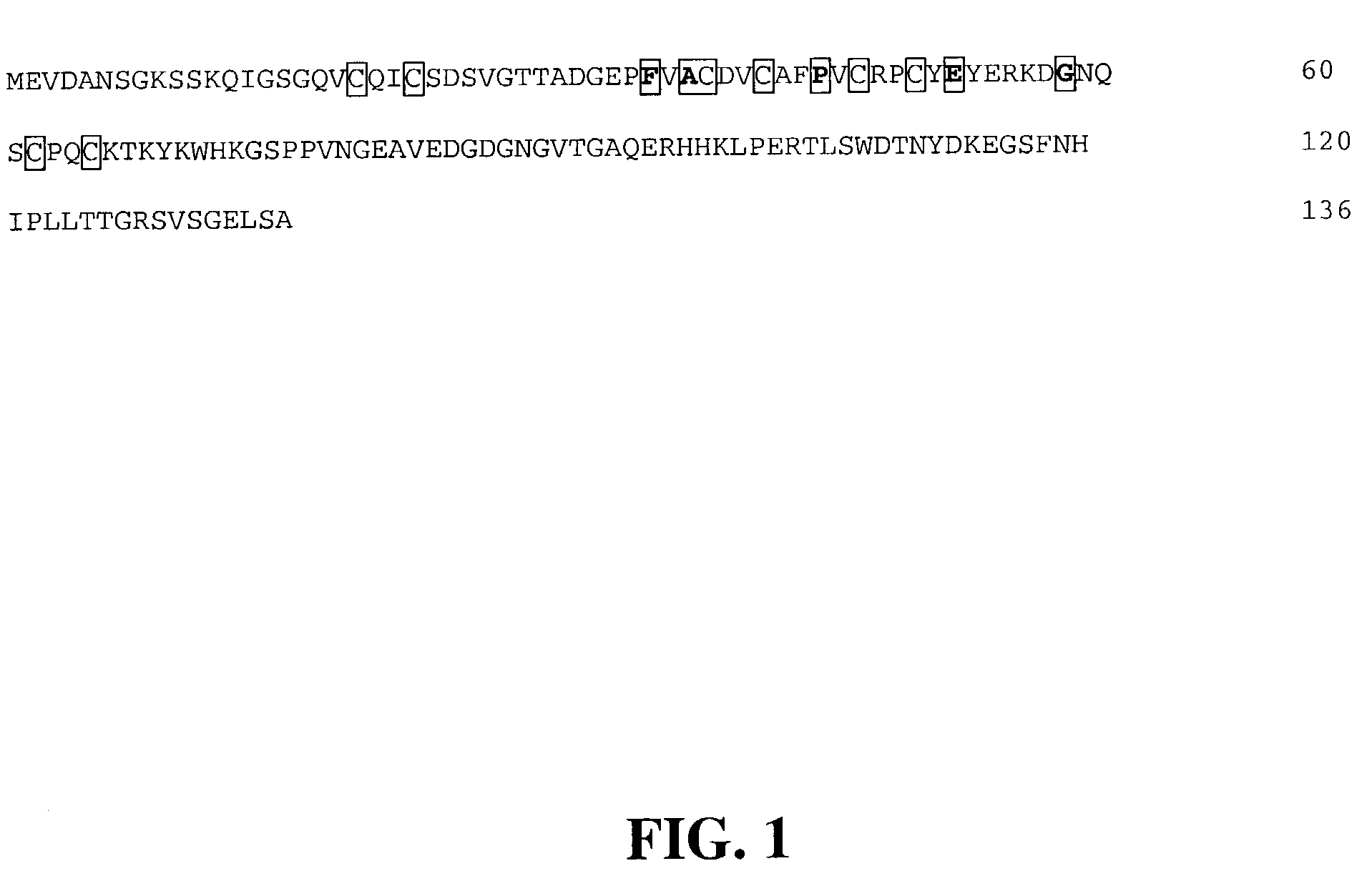Methods for modifying plant cell walls and modified plants produced thereby
a cell wall and plant technology, applied in the field of modification, can solve the problems of reducing the digestibility of forage crops for animals, and mammals have no enzymes capable of breaking down polysaccharides, so as to improve plant traits, enhance the digestibility of forage crops, and increase post-harvest processing
- Summary
- Abstract
- Description
- Claims
- Application Information
AI Technical Summary
Benefits of technology
Problems solved by technology
Method used
Image
Examples
example 1
Library Construction
A. Eucalyptus grandis
[0043]Eucalyptus grandis cDNA expression libraries (from various tissues, including flowers, leaves, phloem, roots, seeds, shoot buds and xylem) were constructed and screened as follows.
[0044]mRNA was extracted from the plant tissue using the protocol of Chang et al., Plant Mol. Biol. Rep. 11:113-116, 1993, with minor modifications. Specifically, samples were dissolved in CPC-RNAXB (100 mM Tris-Cl, pH 8,0; 25 mM EDTA; 2.0 M NaCl; 2% CTAB; 2% PVP and 0.05% Spermidine*3HCl) and extracted with chloroform:isoamyl alcohol, 24:1. mRNA was precipitated with ethanol and the total RNA preparate was purified using a Poly(A) Quik mRNA Isolation Kit (Stratagene, La Jolla, Calif.). A cDNA expression library was constructed from the purified mRNA by reverse transcriptase synthesis followed by insertion of the resulting cDNA clones in Lambda ZAP using a ZAP Express cDNA Synthesis Kit (Stratagene), according to the manufacturer's protocol. The resulting cDN...
example 2
Microarray Transcriptional Profiling
[0049]cDNA clones are arrayed onto glass slides as multiple replicas, with each location corresponding to a unique cDNA clone (as many as 5500 clones can be arrayed on a single slide, or chip). Each chip is hybridized with a pair of cDNA probes that are fluorescence-labeled with Cy3 and Cy5, respectively. RNA is prepared from stems or wood tissues sampled at multiple times during the growth and development of the plant or tree. Typically, 1 μg of polyA+ RNA is used to generate each cDNA probe. After hybridization, the chips are scanned and the fluorescence intensity recorded for both Cy3 and Cy5 channels. There are multiple built-in quality control steps. First, the probe quality is generally monitored using a panel of ubiquitously expressed genes. Secondly, the control plate also can include yeast DNA fragments of which complementary RNA may be spiked into the probe synthesis for measuring the quality of the probe and the sensitivity of the analy...
example 3
Comparison of P. radiata, E. grandis and Arabidopsis thalinana cellulose Synthase and Cellulose Synthase-Like Genes
Comparison of EST sequences from P. radiata, E. grandis and Arabidopsis thaliana databases revealed both similarities (+) and differences (−), as shown in the Table below.
[0050]
Ath groupthalianaPinus radiataE. grandisAtCesA01(RSW1)+−+AtCesA02,05,06,09+−+AtCesA03+++AtCesA07(IRX3)+++AtCesA08(IRX1)+++Cs1A++−Cs1B+−−Cs1C+++Cs1D+−−Cs1E++−Cs1G+−+
PUM
| Property | Measurement | Unit |
|---|---|---|
| digestibility | aaaaa | aaaaa |
| thickness | aaaaa | aaaaa |
| size | aaaaa | aaaaa |
Abstract
Description
Claims
Application Information
 Login to View More
Login to View More - R&D
- Intellectual Property
- Life Sciences
- Materials
- Tech Scout
- Unparalleled Data Quality
- Higher Quality Content
- 60% Fewer Hallucinations
Browse by: Latest US Patents, China's latest patents, Technical Efficacy Thesaurus, Application Domain, Technology Topic, Popular Technical Reports.
© 2025 PatSnap. All rights reserved.Legal|Privacy policy|Modern Slavery Act Transparency Statement|Sitemap|About US| Contact US: help@patsnap.com

